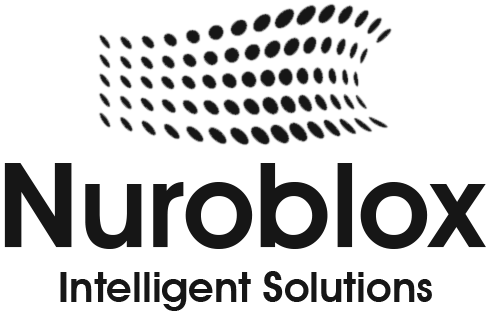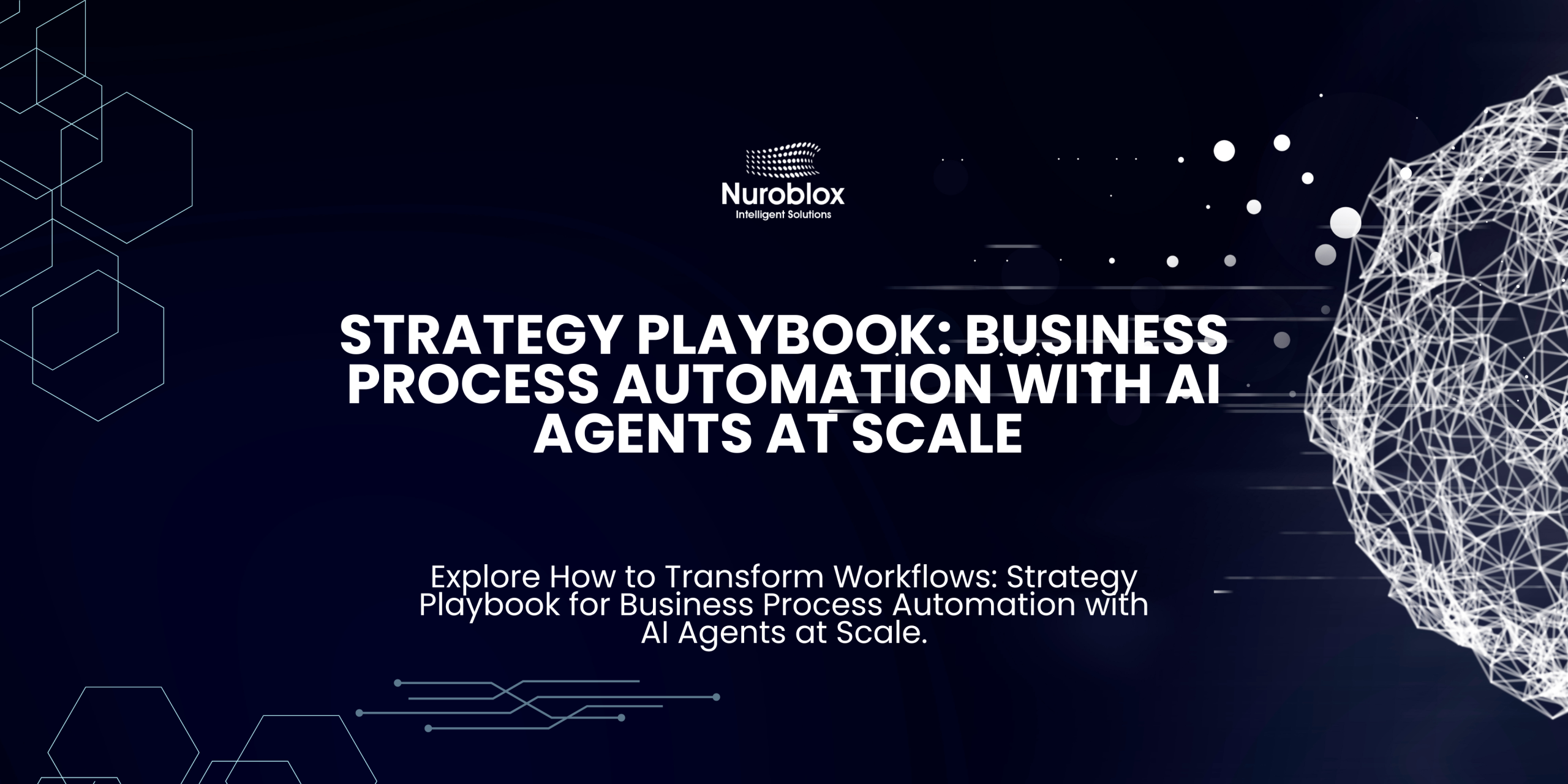Strategy Playbook: Business Process Automation with AI Agents at Scale
In today’s hyper-competitive landscape, enterprise leaders are locked in a relentless battle against inefficiency. Manual, repetitive tasks drain thousands of hours, introduce costly human errors, and create operational bottlenecks that stifle growth. While traditional automation offered a temporary reprieve, its limitations are now a critical liability. The global market for business process automation (BPA) is projected to surge, driven by a universal need for something more intelligent, more adaptive, and more scalable. The era of simple, rule-based bots is over; the future of enterprise efficiency is powered by AI agents.
This playbook provides a comprehensive, strategic guide for leaders ready to move beyond basic automation. We will dissect the limitations of legacy systems and introduce the transformative power of AI agents. You will gain a four-phase framework for identifying, designing, deploying, and scaling an AI-powered workforce that not only executes tasks but also learns, adapts, and drives intelligent business outcomes. This is your roadmap to building a resilient, efficient, and future-proof enterprise.
The Breaking Point – Why Traditional Automation Falls Short
For years, Robotic Process Automation (RPA) was hailed as the key to unlocking efficiency. It excels at automating simple, linear, and high-volume tasks. However, businesses that invested heavily in RPA are now hitting a wall. These systems are fundamentally brittle; they are programmed to follow a strict set of rules and break down when faced with the slightest deviation, such as a change in a UI element or a new document format.
Traditional RPA lacks the cognitive ability to handle unstructured data, interpret context, or make judgments. This means complex processes that require decision-making or involve exceptions still fall back on human employees, capping the potential ROI. The promise of “lights-out” automation remains unfulfilled, leaving a significant gap between initial ambition and actual results.
Enter the AI Agent – The Engine of Modern Enterprise Automation
Unlike their rudimentary RPA counterparts, AI agents are a paradigm shift in automation technology. These are autonomous, goal-oriented software entities equipped with cognitive capabilities that mimic human intelligence. They don’t just follow a script; they perceive their digital environment, process vast amounts of structured and unstructured data, make decisions, and take actions to achieve complex objectives.
From Repetitive Tasks to Dynamic Workflows
The true power of AI agents lies in their ability to manage entire end-to-end workflows that are dynamic and complex. They leverage a suite of AI technologies, including Natural Language Processing (NLP), computer vision, and machine learning, to move beyond simple task execution.
Consider the leap from traditional to intelligent invoice processing –
- Traditional RPA – Can extract data from a standardized invoice template and enter it into a system. It fails if the format changes.
- AI Agent – Can receive an invoice in any format (PDF, image, email), use computer vision and NLP to “read” and understand the content, extract relevant data (vendor, amount, due date), cross-reference it with purchase orders in an ERP system, flag discrepancies based on learned patterns, and route it for approval, all while learning from each transaction to improve accuracy over time.
This ability to handle variability and make informed decisions is what separates true intelligent automation from the fragile bots of the past.

Transitioning to an AI-powered workforce requires a deliberate, strategic approach. Deploying AI agents at scale is not merely a technology project but a fundamental business transformation. This four-phase playbook provides a structured path from initial assessment to enterprise-wide adoption.
Phase 1 – Identify & Prioritize – The Automation Audit
The first step is to pinpoint the processes where AI can deliver the greatest impact. Not all workflows are created equal. The ideal candidates for AI automation are typically characterized by –
- High Volume & Repetitiveness – Tasks that consume significant human hours and occur frequently.
- Data-Intensive Operations – Processes that involve collecting, validating, and inputting large datasets.
- Multiple System Interactions – Workflows that require navigating between different enterprise applications (e.g., CRM, ERP, internal databases).
- Rule-Based with Exceptions – Processes that have a standard procedure but often require judgment calls to handle outliers.
Once identified, these processes should be prioritized using an Impact vs. Effort Matrix. This framework helps you focus on the “quick wins” (high impact, low effort) while building a long-term roadmap for more complex transformations. As a scientist-led firm with deep expertise in enterprise processes , we’ve found this audit to be the most critical stage for ensuring long-term success.
Phase 2 – Design & Develop – Building Your Agentic Workforce
With prioritized processes in hand, the focus shifts to designing the AI agents themselves. Scalability and security are paramount. This phase involves –
- Modular Architecture – Design agents as modular components that can be reused across different workflows. This avoids monolithic, hard-to-maintain code and accelerates future deployments.
- Human-in-the-Loop (HITL) Integration – For processes requiring expert judgment or high-stakes decisions, a HITL design is essential. The AI agent handles the bulk of the work and escalates exceptions to a human expert for final validation. This builds trust and provides a continuous feedback loop for the AI to learn from.
- Secure Orchestration – Deploying a fleet of AI agents requires a secure, centralized platform for management, monitoring, and governance. This ensures that agents operate within defined permissions and that all actions are auditable, a core tenet of enterprise-grade automation.
Phase 3 – Deploy & Integrate – Weaving AI into the Enterprise Fabric
An AI agent is only as effective as its ability to interact with your existing technology stack. Seamless integration is non-negotiable.
- API-First Integration – Prioritize connecting with enterprise systems like SAP, Salesforce, and Oracle through robust APIs. This is far more stable and reliable than the screen-scraping techniques used by older RPA tools.
- Change Management – The introduction of an AI workforce is a cultural shift. It’s crucial to communicate the vision clearly, framing AI agents as “digital teammates” that augment human capabilities, freeing up employees to focus on higher-value strategic work.
- Pilot Programs – Begin with a controlled pilot deployment for a single, high-impact process. This allows you to measure performance, gather feedback, and demonstrate value before a broader rollout.
Phase 4 – Optimize & Scale – From Pilot to Enterprise-Wide Transformation
Automation is not a “set it and forget it” initiative. The goal is a virtuous cycle of continuous improvement.
- Performance Monitoring – Continuously track key metrics such as processing time, accuracy rates, and exception handling. This data is vital for identifying areas for optimization.
- Iterative Learning – Leverage the data generated by your AI agents to uncover deeper insights into your business processes. These insights can inform process re-engineering efforts that simplify workflows even before automation is applied.
- Scaling with a Center of Excellence (CoE) – Establish a dedicated CoE to govern the expansion of your AI automation program. The CoE is responsible for setting best practices, managing the development pipeline, and ensuring that all automation initiatives align with strategic business goals.
Quantifying the Impact – The Tangible ROI of AI-Powered BPA
The business case for scaling business process automation with AI agents is overwhelmingly positive. While the strategic benefits are vast, the quantifiable ROI is what secures executive buy-in. Key advantages include –
- Drastic Cost Reduction – Automating complex, end-to-end processes can reduce operational costs by handling tasks at a fraction of the cost of manual labor.
- Exponential Productivity Gains – AI agents operate 24/7 without fatigue, freeing up human employees from mundane tasks to focus on innovation, customer engagement, and strategic growth.
- Near-Perfect Accuracy – By eliminating manual data entry and human error, AI agents achieve significantly higher accuracy rates in data processing and transaction handling.
- Unmatched Scalability – An AI workforce can scale up or down instantaneously to meet fluctuating business demands without the costs and delays associated with hiring and training.
The transition from fragile, rule-based automation to an intelligent, scalable AI workforce is no longer a futuristic vision, it is an urgent competitive necessity. The playbook outlined here offers a clear, strategic path for enterprises to not just survive but thrive in an increasingly automated world. The technology is here, the ROI is proven, and the playbook is in your hands.
With the cost of operational inefficiency climbing daily, is your organization building its AI workforce, or are you risking being outmaneuvered by those who are?


